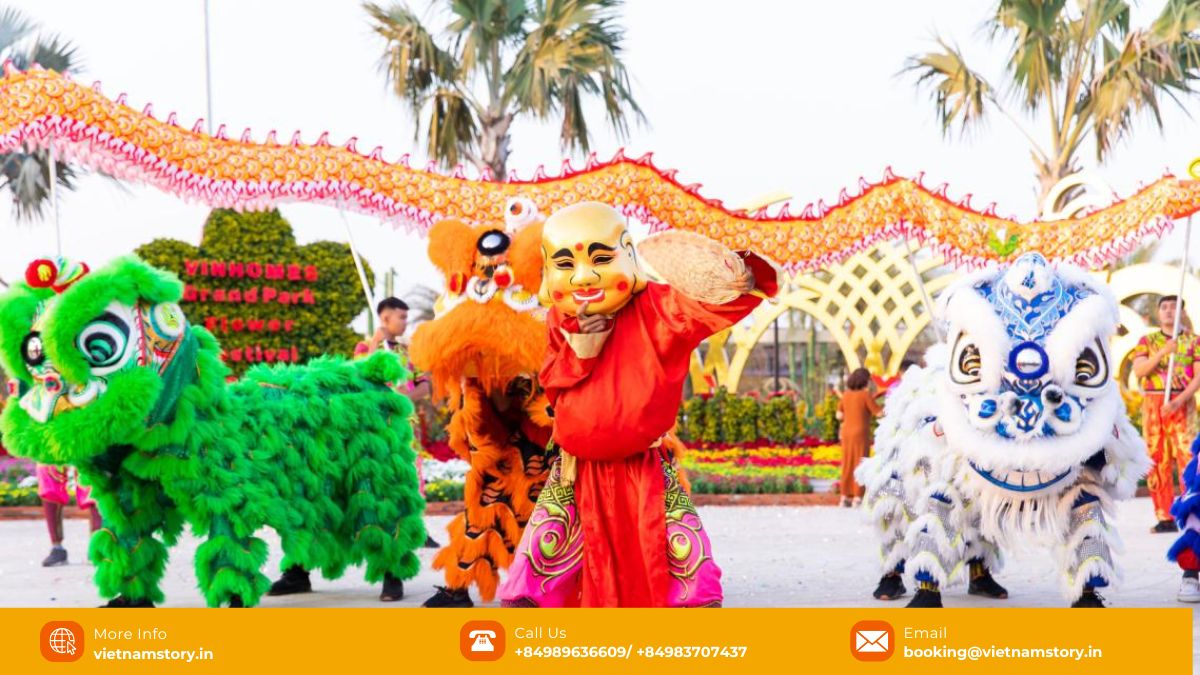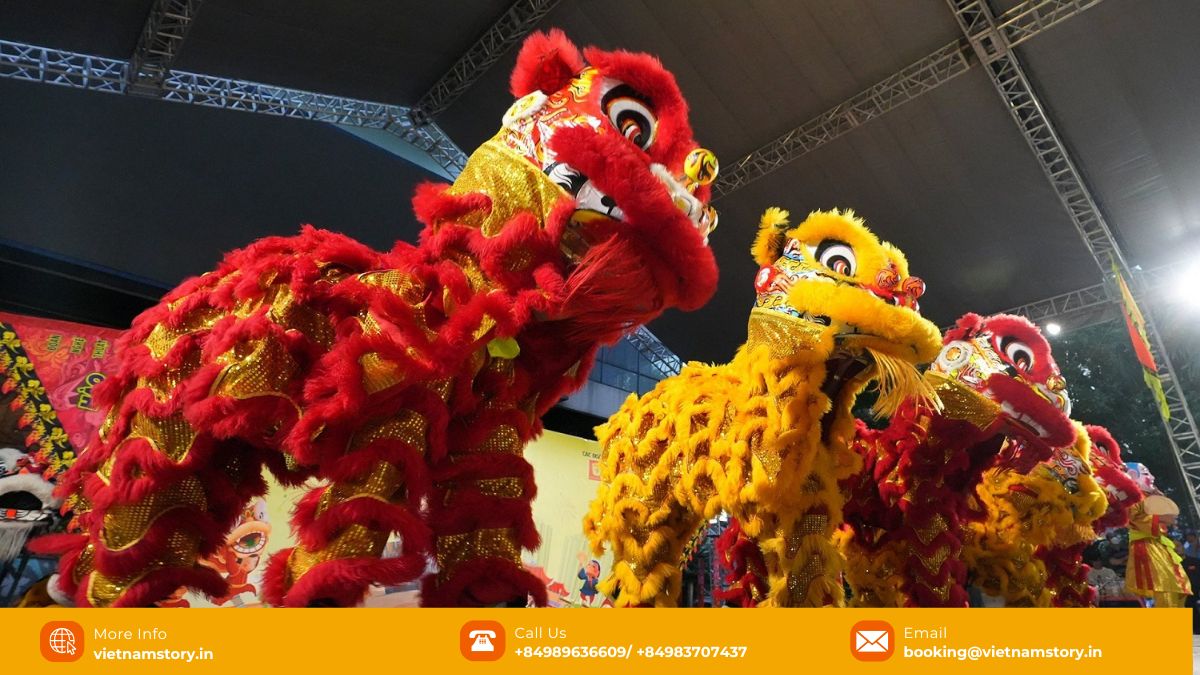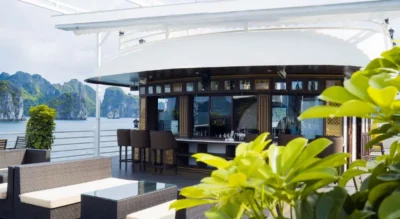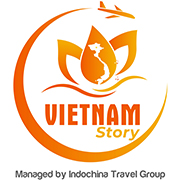The vibrant tapestry of Vietnamese culture is richly adorned with unique and captivating traditions. Among them, the Vietnamese lion dance, known locally as Múa Lân or sometimes Múa Rồng (Vietnamese dragon dance), stands as a powerful symbol of the nation’s enduring spirit and a captivating spectacle of artistry. This traditional art form, a mesmerizing blend of energetic dance, symbolic movements, and rhythmic music, is more than just entertainment; it’s a living expression of Vietnamese culture, deeply rooted in beliefs of luck and prosperity. For visitors, especially those exploring Vietnam on tour from India, witnessing a Vietnamese lion dance performance is an unforgettable immersion into the heart of local festivities.

A Legacy Forged in Legend and Cultural Exchange: Tracing the Lion Dance’s Roots
The history of the lion dance in Vietnam is ancient, believed by many to date back thousands of years, intricately linked to cultural exchange, primarily with neighboring China. While influenced by Chinese traditions (like the Fut San style), the art form was adopted and adapted by the Vietnamese people, evolving into a unique practice reflecting Vietnam’s own values and artistic expressions.
Legend offers another perspective on its origin. It tells of a fearsome beast appearing during the full moon of the eighth lunar month. A wise monk intervened, having a student don a bright red outfit and wield a magical fan, while others beat drums and struck gongs loudly. This drove the beast away. Over time, this story evolved: the beast became the lion, the monk became Ông Địa (the Earth God), a key figure in many performances, and the noisy students became the accompanying musicians. This narrative highlights the core belief that the dance possesses the power to eradicate bad spirits and usher in blessings.
READ MORE: Festivals in Vietnam: A Guide to Celebrations During Your Trip
The Meaning and Significance: More Than Just a Dance
The Vietnamese lion dance is deeply symbolic. Its primary purpose is to bring good fortune, luck, and prosperity while powerfully warding off evil spirits. The energetic movements and loud, rhythmic music are believed to cleanse the space and invite positive energy.
- Blessings and Prosperity: The lion, considered a powerful and auspicious creature, performs movements symbolizing success and abundance.
- Community Bonding: Performances, especially during major festivals, are communal events, bringing people together in shared celebration and strengthening social ties.
- Cultural Preservation: It serves as a vibrant link to the past, preserving and passing down ancient traditions, stories, and artistic skills through generations.
- Joy and Festivity: The colourful spectacle and lively atmosphere bring immense joy, particularly to children who often interact playfully with the performers and Ông Địa.
The Performance: A Symphony of Skill, Symbolism, and Sound
A Vietnamese lion dance performance is a captivating display requiring incredible skill and coordination. It’s a fusion of dance and theater elements.
The Performers and Ông Địa
Typically, two highly skilled performers (or dancers) work in perfect synchrony to bring the lion to life. One controls the expressive head, complete with moving eyes and mouth, while the second manipulates the body, mimicking the powerful yet nimble movements of the lion. Achieving this seamless animation requires rigorous training and understanding of the music cues. Often accompanying the lion is the character Ông Địa, the jovial Earth God. Recognizable by his smiling mask and large fan, Ông Địa interacts playfully with the lion and the audience, symbolizing blessings, happiness, and the earth’s generosity.

The Elaborate Costume
The Vietnamese lion dance costume is a visual masterpiece. The headpiece is striking, adorned with faux fur, feathers, and bright fabrics. The body is built over a sturdy yet light bamboo or wooden frame, covered in shimmering fabric often embellished with tassels and bells. Predominant colours like Red, Gold, Green, and Blue dominate, each potentially holding symbolic meaning. Uniquely, the costume design often incorporates revered qualities of the Four Sacred Beasts: the dragon’s jaw, the lion’s nose, the phoenix’s eyebrows, and the turtle’s tail. Another rare but significant detail can be the inclusion of fish fins near the edge, symbolizing triumph (referencing the legend of the fish overcoming challenges to become a dragon).
The Driving Music
Music is inseparable from the performance. A fast-paced, energetic rhythm created by traditional instruments sets the mood and guides the dancers. Large drums provide the main beat, punctuated by the clash of cymbals and the resonance of gongs. This vibrant soundscape signals the lion’s actions – waking, playing, leaping, or showing curiosity – and fills the air with an unmistakable sense of festivity.
The Symbolic Movements
The dance incorporates a repertoire of synchronized movements: powerful leaps, spins, bows, stretches, and pounces. Crouching might show curiosity, while leaping represents overcoming obstacles. Performers must master coordination, listening intently to the drum beats to execute complex sequences. Some troupes showcase incredible feats, like the *lion on stilts* or the *lion climbing a tall pole*, symbolizing resilience and the overcoming of challenges. Another fascinating routine is the *pearl-chasing dragon*, where the dragon figure follows a ‘pearl’ held by another performer, depicting ancient lore.
When and Where to Witness the Vietnamese Lion Dance?
For travelers, especially those from India visiting Vietnam, timing your trip around key celebrations offers the best chance to experience this electrifying tradition. Vietnamese lion dance is an indispensable part of:
- Tết (Vietnamese Lunar New Year): This is the most significant holiday, and lion dances are ubiquitous, performed to usher in luck and prosperity for the new year in homes, businesses, and public spaces.
- Tết Trung Thu (Mid-Autumn Festival): Held on the 15th day of the 8th lunar month, this colourful festival heavily features lion and dragon dances, delighting children and celebrating the harvest moon.
- Grand Openings: Businesses often hire lion dance troupes for opening ceremonies to ensure a prosperous start.
- Weddings: Performances can bless the couple with happiness and good fortune (often presenting scrolls like “Trăm Năm Hạnh Phúc” – “One Hundred Years of Happiness”).
- Other Festivals and Temple Celebrations: Various regional and local festivals throughout the year incorporate lion dances.
You are likely to encounter these vibrant performances in major cities and tourist hubs like Hanoi, Ho Chi Minh City, Hoi An, Nha Trang, and Da Nang during these festive periods.

Vietnamese Lion Dance vs. Chinese Lion Dance
While sharing roots and the core purpose of bringing good luck, the Vietnamese lion dance has evolved distinct characteristics. Vietnamese lions often have a slightly different aesthetic, sometimes appearing more slender. The inclusion and specific portrayal of Ông Địa are more prominent in Vietnamese performances. While acrobatics feature in both, certain Southern Vietnamese styles are renowned for their particularly dynamic and playful routines. The overall cultural context and specific folklore woven into the performances give the Vietnamese tradition its unique flavour.
Experiencing the Magic on Your Vietnam Tour
To truly appreciate the Vietnamese lion dance, seek out a live performance during your travels in Vietnam. Attending a festival like Tet or the Mid-Autumn Festival offers the most immersive experience. Observe the incredible coordination between the performers, feel the pulse of the drums and cymbals, admire the intricate details of the costume, and appreciate the deep cultural significance behind the movements. It’s a sensory feast and a direct connection to the vibrant heart of Vietnamese tradition.
READ MORE: Hung King Festival – A Journey Through Vietnam’s Legend and History
Conclusion
The Vietnamese lion dance (Múa Lân) is far more than just a colourful spectacle; it’s a dynamic blend of athleticism, artistry, deep-rooted tradition, and profound cultural symbolism. It embodies the festive spirit of Vietnam, bringing communities together and carrying forward beliefs in luck, prosperity, and the power to dispel negativity. For any traveler to Vietnam, particularly visitors from India seeking authentic cultural experiences, witnessing the energy and skill of a Vietnamese lion dance provides a unique insight into the nation’s rich heritage and leaves a lasting impression of its vibrant spirit.












